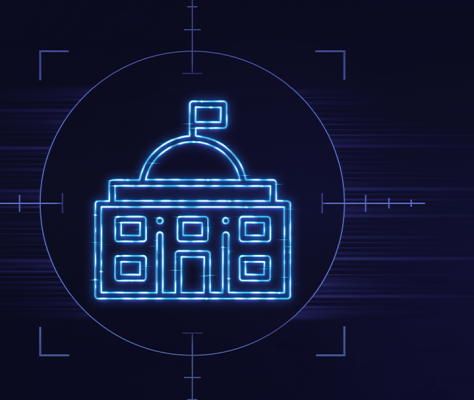Innovative business leaders are embracing new opportunities and tackling new challenges in the digital economy that has stemmed from systemic shifts brought on by the pandemic. From remote and hybrid work to adjustments in business strategy, the CIO and IT leadership bench have no shortage of priorities and projects they are constantly juggling. Sound familiar?
In the first iteration of the three-part CIO Cabinet series, Salesforce CIO Jo-ann de Pass Olsovsky and other industry leaders discuss the challenges CIOs face during the pandemic and how they have been setting their organizations for a successful hybrid working model. Oslovsky takes a closer look at the role of the CIO in a hybrid work world and explores how the accelerated adoption of digital technology has impacted the job of CIOs. In her analysis, she explores the most significant challenges CIOs will have to tackle in the quarters and years to come, the sudden shift to a digital-first business environment, and how the convergence between IT and business has caused CIOs to adopt multifaceted roles.
The conversation continues in the second installment of the series as Oslovsky explores how CIOs are redefining the employee experience. Finally, in the final part of the series, Oslovsky discusses hybrid work models and the integral role IT has played in building the tools and digital infrastructure necessary to enable hybrid work.
In this article, we’ve tapped three industry leaders to understand the priorities, strategies, and initiatives they are adopting or employing to thrive in the digital economy.
Three CIO priorities to thrive in the digital economy
1. Delivering a seamless hybrid CX and employee experience
Delivering a frictionless digital customer experience is one of the most defining aspects of a successful digital strategy. As a result, CIOs must work cross-functionally to design a seamless hybrid experience to meet the changing needs of customers and employees everywhere. To do this, they must overhaul outdated legacy systems and replace them with integrative tools that enable collaboration, invest in digitally upskilling their workforce, and adopt a hybrid work and business model to ensure connectivity across different teams and offices.
“One of the key responsibilities for IT teams is to not only create this foundation of composability but also educate and enable their business counterparts to self-serve and unlock data to make innovation happen at scale securely.”
Brent Hayward, CEO, MuleSoft
In addition to having a digitally adept workforce, consolidating data management systems, streamlining the integration of tools, and adopting a culture of reuse are key steps CIOs can take to augment workflows.
2. Redesigning digital business strategy to fill the IT delivery gap
The pandemic has been one of the most significant tech disruptors in our modern world. As a result of the disruption, IT leaders have to scale their digital initiatives from years and months to a matter of days and weeks. With a growing IT delivery gap, CIOs have to shift their focus from keeping the lights on to accelerating digital initiatives to remain competitive in the new, digital-first world. So how did they do it? To support their digital roadmap and adapt to the new working model, IT leaders invested in automation and implemented new technology such as APIs, cloud, and data lakes to meet customers’ demands quickly.
Tableau CEO Andrew Beers expands on the strategies CIOs have employed to remain competitive in the digital economy:
“For businesses to thrive in the future, they need to make the biggest bets on data now. Cloud is becoming the first place people go to access their data. In addition, AI and machine learning are quickly changing the world of analytics. These trends will have a profound impact on work, and CIOs need to set the right analytics strategy in motion so people across their organization can make deeper data explorations to uncover more possibilities — regardless of their technical expertise or work location.”
Andrew Beers, CEO, Tableau
3. Embracing agility and managing data protection
Data is one of the most valuable assets in today’s economy — regardless of the industry or sector, business leaders worldwide value the insight and economic benefits that data provides. As a result, effective data governance is top of mind for IT leaders, and the successful implementation of emerging technology is imperative for business success. Because of this, CIOs must foster a culture of innovation and agility by investing in automation and machine learning technology to create and scale exceptional hybrid experiences.
The role of the CIO is ever-changing. In the past 19 months, they have morphed to become technologists, business strategists, and directors of business innovation. In the volatile and complex new world, they have been agile leaders, quickly adopting new technology and sub-roles to ensure long-term growth for their organizations in the digital economy.
Mulesoft VP of Strategy and Innovation, Paolo Mallinverno, expounds on the evolving role of CIOs as digital leaders:
”CIOs had to help the rest of the enterprise work in a virtual world as quickly as possible. As a consequence, CIOs had to keep up with the relentless pace of an accelerated digital transformation. That left even less space for long-term strategies. As a result, CIOs became ‘doers’ and practitioners much more than agenda setters or five-year planners.”
Paolo Mallinverno, VP of Strategy and Innovation, MuleSoft
Moving forward in the digital age
If there is anything the pandemic has taught us in the world of business, it is that businesses are heavily dependent on the leadership of CIOs for long-term success and employee engagement. Their notable contributions have helped companies not only keep their lights on during a time of uncertainty but accelerate growth. As we continue to navigate the digital challenges and opportunities, we will continue to rely on the wisdom and foresight of IT leaders around the world.
To learn more about how CIOs and other industry leaders are responding to changing market dynamics, read The State of Business and IT Innovation report.









